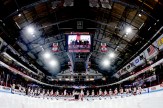Northeastern University responds to misleading Boston Globe Ideas story by Max Kutner

It is an extreme and rare occasion when a news outlet publishes an article with such disregard for facts and important context that it effectively sabotages basic journalistic practices.
Such is the case with “At America’s universities, status is for sale,” an opinion piece by freelance writer Max Kutner that appeared in the Ideas section of The Boston Globe.
The writer uses a current federal investigation into admissions practices at universities across the country as a premise for a story that reuses a completely unrelated article that appeared in Boston Magazine five years ago.
The Globe article is riddled with breaches of journalistic norms. There is a multitude of instances in which the writer merely recycles quotes and rewrites information from his 2014 piece in Boston Magazine. Throughout the Globe piece, there is no effort to update this information, a shocking departure from Globe standards. Nor is there an effort to verify whether Boston Magazine, in 2014, got the facts right.
How such a story made it into the Globe is unclear. What is clear is that universities exist to educate and reveal truth.
In keeping with this mission, a team of News@Northeastern reporters lays out the departures from accepted journalistic practice and factual inaccuracies throughout the Globe piece.
A flaw that runs through the entire Globe piece is a failure to understand the difference between motivation and correlation. For example, when a university dramatically improves its student retention and graduation rates, this is a manifestly positive development. If these improvements have the effect of also improving external rankings, this is simply a byproduct of the institution’s real success.
Below is a brief summary of facts that highlight the unprecedented achievements at Northeastern.
External research funding
2006: $48.7 million
2019: $160.3 million
Freshman to sophomore retention rate
2006: 86%
2019: 97%
Six-year graduation rate
2006: 60%
2019: 87%
Student/faculty ratio
2006: 16/1
2019: 14/1
Average two-part SAT score
2006: 1230
2019: 1469
Job placement:
Today, 93 percent of Northeastern undergraduates are employed or in graduate school within nine months of graduation.
Financial strength:
In 2018, Moody’s Investor Services upgraded Northeastern’s bond rating to A1 at a time when the rating agency offered a “negative outlook” to higher education as a whole.
Philanthropy:
Over the past 13 years, Northeastern has raised more than $903 million in support from alumni and other donors. This includes the successful completion of its Empower campaign, the largest fundraising drive in university history.
Renata Nyul is vice president for communications at Northeastern University.






